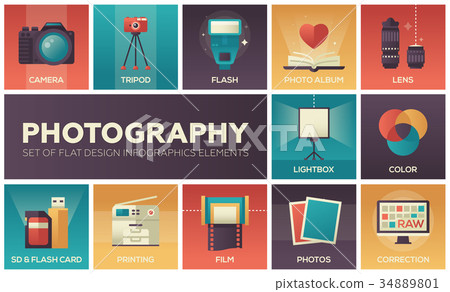What Every Digital Photographer Should Learn About Lighting
What Every Digital Photographer Should Learn About Lighting
Blog Article
Web Content Composed By-Caldwell Brady
As a digital photographer, you recognize that illumination can make or break your images. Comprehending https://www.androidauthority.com/smartphone-photography-tips-tricks-872213/ of both all-natural and synthetic light is necessary for catching the mood and clearness you go for in your work. Whether you're going after the excellent golden hour radiance or adjust your fabricated setups, mastering these components can raise your photography dramatically. Yet there are common challenges that many forget, and identifying them can change your strategy to every shoot. Allow's discover what you could be missing and how it can impact your results.
Understanding Natural Light
Understanding natural light is crucial for any type of photographer seeking to boost their work. It's the structure of terrific photography, affecting state of mind, tone, and clearness. When you shoot outdoors, pay attention to the time of day. The gold hour-- quickly after sunrise and before sunset-- offers soft, cozy light that can change regular scenes into spectacular pictures.
Do not undervalue the power of cloudy days. Cloud cover diffuses sunlight, creating a soft, also light that's best for pictures and macro digital photography. You'll discover colors pop in this kind of lighting without extreme shadows.
Placing issues, as well. Always consider your topic's alignment to the light. If the sun's behind your topic, you might wind up with a shape, which can be remarkable however mightn't be what you desire. Alternatively, straight sunshine can develop unflattering darkness.
Experiment with angles; in some cases, changing your point of view can generate outstanding outcomes. Use natural reflectors, like water or sand, to jump light onto your topic, including dimension.
Learning Artificial Light
Grasping synthetic light is necessary for professional photographers who intend to take their skills to the next degree. Whether you're making use of speedlights, studio strobes, or continuous lights, comprehending exactly how to adjust these sources can dramatically improve your pictures.
Start by acquainting yourself with the basics of light high quality, instructions, and shade temperature. Experiment with various modifiers like softboxes, umbrellas, or grids to control the gentleness or violence of the light.
https://squareblogs.net/broderick772vince/creative-ways-to-market-your-photography-provider 'll discover that soft light often creates flattering results, while harsher light can add drama and deepness. http://chanell409gregorio.xtgem.com/__xt_blog/__xtblog_entry/__xtblog_entry/37565783-how-to-locate-your-special-design-as-a-photographer?__xtblog_block_id=1#xt_blog shy away from darkness; they can enhance the three-dimensionality of your topics.
Pay close attention to the placement of your lights. A light located also near to your subject can develop unflattering results, while too away can result in an absence of information. Make use of a light meter or your electronic camera's histogram to ensure you're revealing properly.
Last but not least, keep in mind that fabricated light can be mixed with ambient light for creative effects. Balancing these resources could take method, once you grasp it, your photography will genuinely shine.
Strategies for Different Situations
When you enter various capturing circumstances, adapting your lighting strategies is critical for capturing the very best pictures. For outdoor portraits, make use of the golden hour-- morning or late afternoon light-- to soften darkness and improve complexion.
If it's a harsh midday sunlight, take into consideration using a reflector to jump light back onto your topic or seek shaded areas for an extra even exposure.
In low-light situations, like indoor occasions, raise your ISO and utilize a large aperture to let in more light. A tripod can assist eliminate video camera shake, allowing for longer direct exposures without blurring.
If you're contending night, trying out off-camera flash to develop dynamic lighting and deepness in your images.
For item digital photography, use diffused lights to stay clear of harsh reflections. Softboxes or light camping tents can help accomplish this result.
When photographing landscapes, think about the direction of light and time of day, as it can dramatically change the mood of your shot.
Always prepare to adjust your settings and placing based upon the situation, as adaptability is crucial to mastering lights in digital photography.
Final thought
Finally, grasping lighting is essential to elevating your photography skills. Accept all-natural light's elegance throughout golden hour, and don't shy away from trying out artificial light techniques. By adjusting your technique to different situations, you'll catch spectacular pictures that reverberate with feeling and clearness. Keep in mind, the appropriate illumination can transform an average shot into something phenomenal, so keep exercising and fine-tuning your understanding of both natural and man-made light. Happy capturing!
